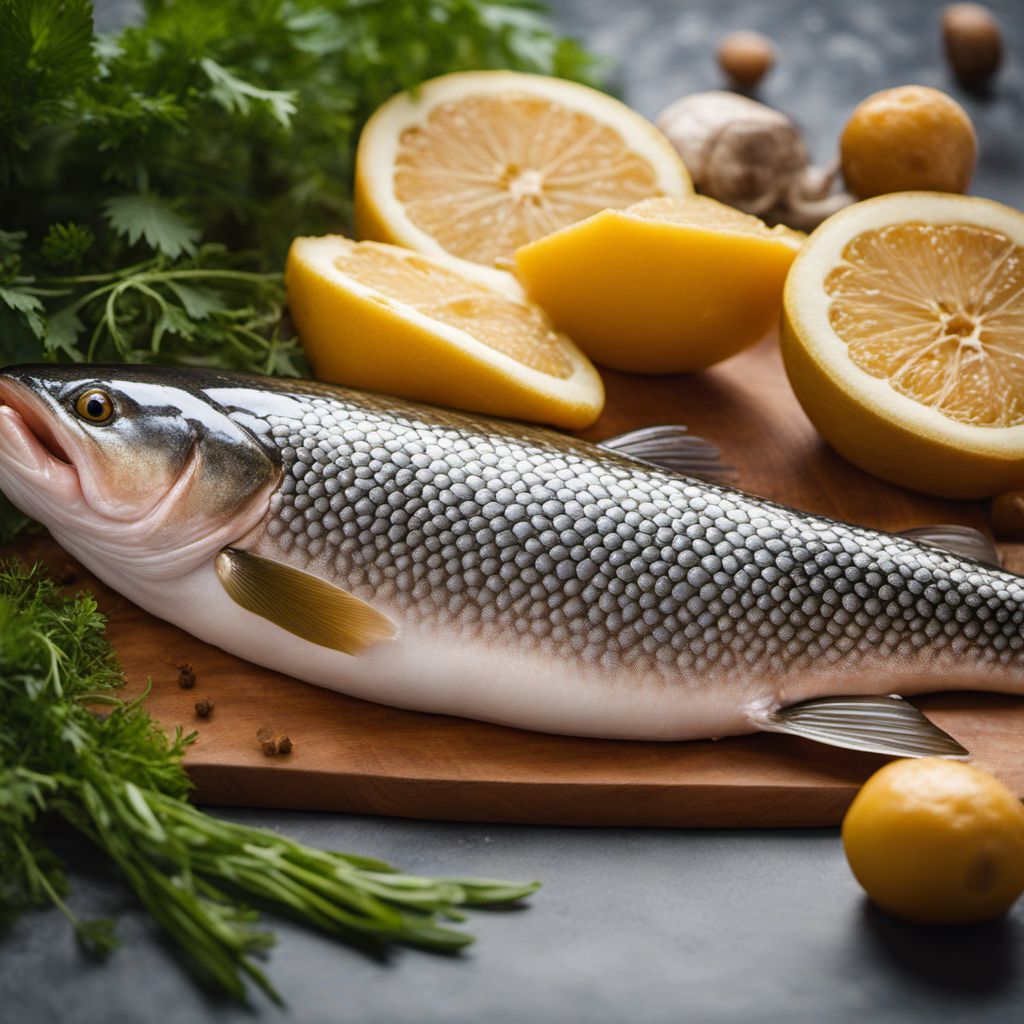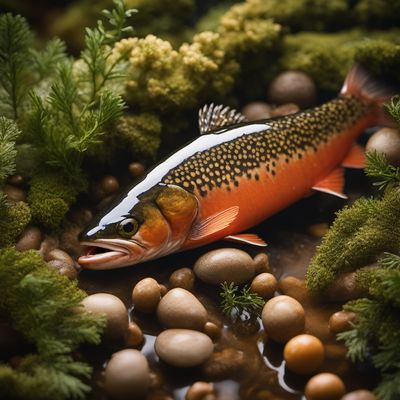
Ingredient
Lake trout
The Freshwater Delicacy
Lake trout is a large fish species found in freshwater lakes. It has a silvery-gray color with light spots on its body. The flesh of lake trout is firm, yet tender, and has a delicate flavor. The fish is often described as having a mild and slightly sweet taste. Lake trout can be prepared in various ways, including grilling, baking, or pan-frying. It is commonly used in dishes like fish tacos, fish chowder, or as a substitute for other white fish in recipes.
Origins and history
Lake trout is native to North America and is found in many freshwater lakes across the continent. It is particularly abundant in the Great Lakes region and is a popular sport fish. Lake trout has been an important food source for indigenous communities for centuries. It is also commercially harvested and sold in markets. The fish is known for its ability to thrive in cold water and is often associated with pristine lake environments. Lake trout populations have faced challenges due to overfishing and habitat degradation, leading to conservation efforts to protect the species.
Nutritional information
Lake trout is a good source of protein and omega-3 fatty acids. It also contains vitamins D and B12. However, it is relatively high in cholesterol, so it should be consumed in moderation. Each 100 grams of lake trout provides approximately 150 calories.
Allergens
May contain traces of other fish allergens.
How to select
When selecting lake trout, look for fish that have clear, bright eyes and shiny skin. The flesh should be firm to the touch and have a mild, fresh aroma. Avoid fish that have a strong or unpleasant smell, as it may indicate spoilage. If possible, choose fish that have been sustainably harvested or certified by reputable organizations, such as the Marine Stewardship Council (MSC).
Storage recommendations
To maintain the freshness of lake trout, it should be stored in the refrigerator at temperatures below 40°F (4°C). It is best to wrap the fish in moisture-proof paper or plastic wrap to prevent it from drying out. Fresh lake trout should be consumed within a day or two of purchase. If the fish develops a strong odor or slimy texture, it should be discarded.
How to produce
Lake trout is a wild fish species and cannot be easily produced or raised by amateurs. It requires specific lake environments and conditions to thrive. However, individuals can engage in responsible fishing practices to enjoy lake trout as a recreational activity.
Preparation tips
Lake trout can be prepared in various ways, depending on personal preference and cooking techniques. It can be grilled, baked, broiled, or pan-fried. The fish pairs well with flavors like lemon, dill, garlic, or herbs. Lake trout can be served as a main course with roasted vegetables or used in dishes like fish tacos, fish chowder, or fish cakes. It is also delicious when smoked and used in dips or spreads.
Substitutions
Rainbow trout, Arctic char
Culinary uses
Lake trout is commonly used in various culinary preparations, including fish tacos, fish chowder, or as a substitute for other white fish in recipes. It is also enjoyed as a grilled or pan-fried fish fillet. The delicate flavor and tender flesh of lake trout make it a versatile ingredient in many dishes.
Availability
North America


